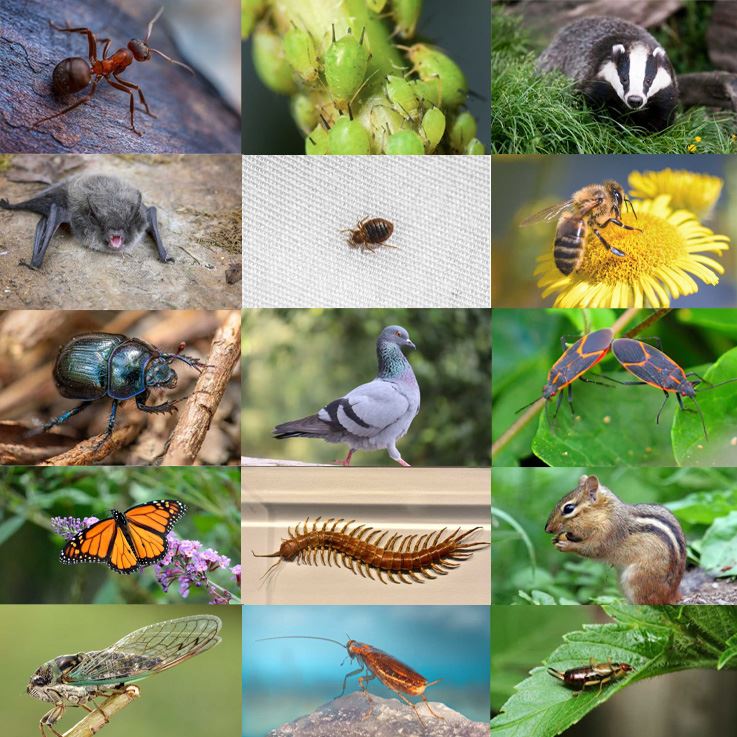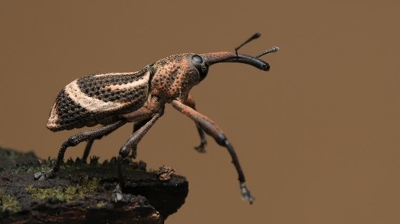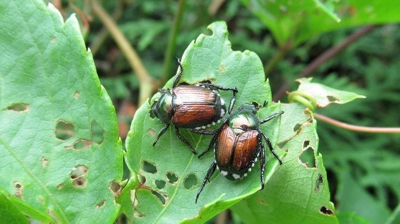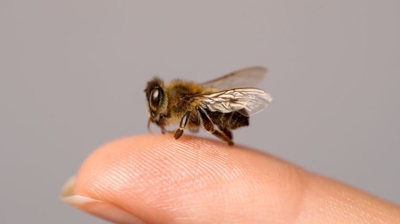
Brown Banded Cockroaches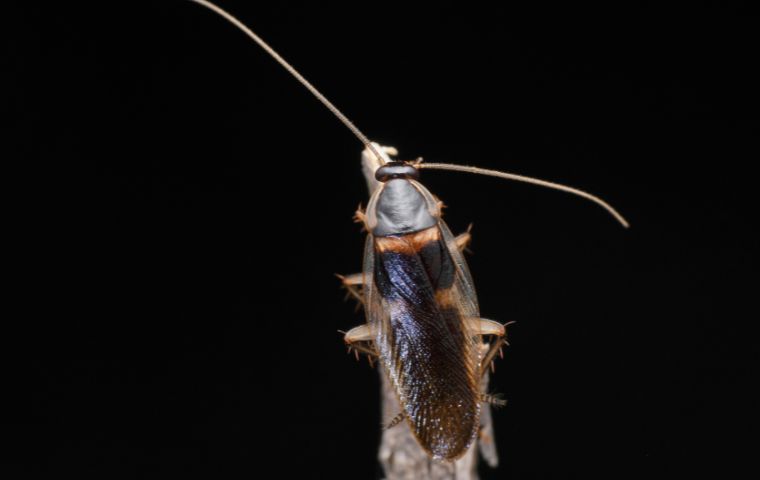
What Are Brown Banded Cockroaches?
Brown-banded cockroaches (Supella longipalpa) are a species of small cockroach commonly found in households and commercial spaces. They are one of the most common cockroach species in the United States and can be found in many other parts of the world. Here is an overview of brown-banded cockroaches:
- Identification: Brown-banded cockroaches are relatively small, measuring about 10 to 14 mm in length. They are light brown to dark brown in color and are distinguished by two distinctive, light-colored bands running across their wings and abdomen, which give them their name. These bands are more pronounced in nymphs (young cockroaches) and may fade in adults.
- Habitat: Unlike the more well-known German cockroach and American cockroach, brown-banded cockroaches prefer drier and warmer environments. They are often found in areas where there is less moisture, such as high up on walls, ceilings, inside cabinets, and furniture. They tend to avoid kitchens and bathrooms, instead favoring bedrooms, living rooms, and other areas with less humidity.
- Diet: Brown-banded cockroaches are omnivorous and will eat a wide range of materials, including starchy and sugary foods, cardboard, glue, book bindings, and even dead insects. They can survive on very limited food sources, making them adaptable to various environments.
- Reproduction: Like other cockroach species, brown-banded cockroaches reproduce quickly. A female can produce up to 14 egg capsules in her lifetime, with each capsule containing around 10 to 18 eggs. These capsules are often hidden in cracks and crevices, making them difficult to find and eradicate.
- Health Concerns: Brown-banded cockroaches, like their counterparts, can pose health risks to humans. They can carry pathogens and allergens, potentially leading to diseases and respiratory issues. Their droppings and shed skins can trigger allergies in sensitive individuals.
- Control and Prevention: Controlling brown-banded cockroaches requires a comprehensive approach. It involves eliminating food sources, sealing cracks and crevices where they hide, and implementing effective insecticides or baits. Due to their propensity for hiding in hard-to-reach places, professional pest control may be necessary for complete eradication.
Brown-banded cockroaches are a common household pest known for their distinctive banding and preference for drier environments. Understanding their habits, habitat, and biology is essential for effective control and prevention. If an infestation is suspected, it's advisable to consult with a pest control professional for thorough and expert assistance.
Are brown-banded cockroaches dangerous?
Brown banded cockroaches are considered to be a nuisance and a potential health hazard when they invade homes and buildings. Here are some of the ways that brown banded cockroaches can be dangerous:
- Spread of disease: Brown banded cockroaches can spread disease-causing organisms such as bacteria, viruses, and parasites. Cockroaches can pick up pathogens on their legs and body and transfer them to surfaces and food. This can lead to the spread of diseases such as Salmonella, E. coli, and Staphylococcus aureus. Cockroaches can also carry parasites such as tapeworms, which can infect humans and animals.
- Contamination of food and surfaces: Brown banded cockroaches are attracted to food sources, and they can contaminate food and surfaces with their feces, saliva, and body parts. This can lead to the transmission of bacteria, viruses, and other pathogens that can cause food poisoning, gastroenteritis, and other diseases. Cockroach feces and body parts have been linked to the spread of diseases such as Salmonella, Shigella, and Campylobacter.
- Allergic reactions: Brown banded cockroaches can trigger allergic reactions in some people, especially those with pre-existing respiratory conditions such as asthma. Cockroach allergens are present in their feces, saliva, and body parts, and can become airborne and trigger allergic symptoms such as sneezing, coughing, and wheezing. In some cases, exposure to cockroach allergens can also lead to skin reactions such as hives.
- Asthma triggers: Cockroach allergens have been identified as one of the most common indoor triggers of asthma, especially in urban environments. Exposure to cockroach allergens can exacerbate asthma symptoms and increase the risk of asthma attacks. Children are particularly susceptible to the effects of cockroach allergens, and exposure to these allergens during childhood has been linked to the development of asthma.
- Damage to property: Brown banded cockroaches can cause damage to property. They can chew through paper and cardboard boxes, damage fabrics, and leave stains on surfaces. Their feces can also cause discoloration and odor problems. In addition, cockroach infestations can lead to the devaluation of property and create a negative impression for visitors.
Do Brown Banded Cockroaches Bite?
Brown-banded cockroaches (Supella longipalpa) are not known for biting humans. Unlike some other cockroach species, such as the larger American cockroach, brown-banded cockroaches are not considered a significant threat in terms of biting or causing harm to people.
Their primary concerns are related to their presence and the potential health risks associated with them, which include:
- Allergens: Brown-banded cockroaches can produce allergenic proteins that are present in their feces, shed skins, and saliva. These proteins can trigger allergic reactions in some individuals, particularly those with asthma or other respiratory conditions.
- Pathogen Transmission: While brown-banded cockroaches are not as notorious for carrying disease-causing pathogens as some other species, there is still a risk that they can transport microorganisms, including bacteria, from unsanitary areas to food preparation surfaces, which could potentially lead to foodborne illnesses.
While they don't bite, brown-banded cockroaches are considered a nuisance and a potential health concern due to their unsanitary habits and ability to infest indoor spaces. It's important to take measures to prevent their presence, such as maintaining cleanliness, sealing entry points, and using pest control methods when necessary. If you are experiencing a brown-banded cockroach infestation or have concerns about their presence in your home, it's advisable to consult with a professional pest control service to address the issue comprehensively.
What Do Brown Banded Cockroaches Look Like?
Brown-banded cockroaches (Supella longipalpa) have distinct features that set them apart from other cockroach species. Here's a description of what they look like:
- Size: Brown-banded cockroaches are relatively small compared to other common cockroach species. They typically measure between 10 to 14 millimeters (about 0.4 to 0.55 inches) in length.
- Color: These roaches are light to dark brown in color. They have a glossy appearance with a somewhat shiny exoskeleton.
- Bands: The most distinctive feature of brown-banded cockroaches is the two light-colored bands that run across their bodies, which gives them their name. One band stretches across their wings, and the other is located at the base of the abdomen. These bands are more prominent in nymphs (young cockroaches) and may become less distinct in adult individuals.
- Antennae: Brown-banded cockroaches have long, slender antennae that are often longer than their bodies. These antennae play a crucial role in sensing their environment and locating food sources.
- Wings: These roaches have fully developed wings but are not strong fliers. Their primary mode of movement is running, and they are often more agile on the ground.
- Size Differences: Males and females of this species look very similar in terms of color and banding, but there are slight differences in size. Males tend to have longer wings and are generally smaller than females.
- Nymphs: Nymphs (young brown-banded cockroaches) are smaller and lighter in color than adults. Their bands are often more pronounced, making them easier to identify.
Brown-banded cockroaches are characterized by their small size, light to dark brown coloration, and the two distinctive bands across their bodies. These bands are the key identifying feature that separates them from other cockroach species, making them relatively easy to recognize when seen in your home or other environments.
Where Are Brown Banded Cockroaches Found?
Brown-banded cockroaches (Supella longipalpa) have specific habitat preferences that differ from other cockroach species. Here's where you might find brown-banded cockroaches:
- Indoors: Brown-banded cockroaches are primarily indoor pests and are often found in residential and commercial buildings. They prefer drier and warmer conditions, and unlike some other common cockroach species, they tend to avoid areas with high humidity. You can find them in various indoor locations, including:
- Bedrooms: Brown-banded cockroaches often hide in and around bedroom furniture, closets, and wall hangings.
- Living Rooms: They can be found in upholstered furniture, behind picture frames, and inside electrical outlets.
- Office Spaces: These cockroaches may infest office buildings, especially in areas with a lack of humidity, like storage rooms or bookshelves.
- Cabinets: They may infest kitchen and bathroom cabinets, especially if these spaces are less humid than other areas of the home.
- High Locations: Unlike many other roaches, brown-banded cockroaches tend to hide in higher locations. You may find them in ceilings, upper cabinets, and near light fixtures.
- Electrical Appliances: They are known to hide in and around electrical appliances, such as TVs, radios, and even inside refrigerator motors.
- Cracks and Crevices: Brown-banded cockroaches are skilled at hiding in small cracks and crevices, making them challenging to spot and eliminate. They can squeeze into tiny spaces, which can be behind baseboards, in wall voids, or within furniture.
- Transported Items: These roaches can also be inadvertently introduced into new areas through infested items such as furniture or boxes.
- Warm and Dry Regions: While they can be found in various parts of the world, brown-banded cockroaches are more common in warmer, drier regions where they can thrive due to their preference for lower humidity.
Brown-banded cockroaches are most often found indoors, especially in rooms and spaces with lower humidity. They tend to hide in high places and small cracks and crevices, making them challenging to detect and control. If you suspect an infestation, it's essential to thoroughly inspect your home or commercial space to locate their hiding spots and take appropriate pest control measures.
What Is The Life Cycle Of Brown Banded Cockroaches?
The life cycle of brown-banded cockroaches (Supella longipalpa) is similar to that of other cockroach species and consists of several stages, including egg, nymph, and adult. Here is the life cycle of brown-banded cockroaches:
Egg Stage:
The life cycle begins with the female brown-banded cockroach laying egg capsules. These capsules, also known as oothecae, are protective cases that contain multiple eggs. Each ootheca typically contains 10 to 18 eggs. The female deposits the ootheca in a concealed location, such as in cracks and crevices, or hidden within furniture. The female brown-banded cockroach can produce multiple oothecae throughout her lifetime.
Nymph Stage:
After a few weeks, the eggs within the ootheca hatch, releasing nymphs. Nymphs are young, immature cockroaches that resemble adults but are smaller and lack fully developed wings. Nymphs go through several stages of development, shedding their exoskeletons, or molting, as they grow. During each molt, they develop more adult-like features. Brown-banded cockroach nymphs are highly active and require food and water to support their growth. The duration of the nymph stage varies but typically takes a few months.
Adult Stage:
Once the nymphs complete their development through several molts, they reach the adult stage. Adult brown-banded cockroaches are fully developed and capable of reproducing. They are about 10 to 14 millimeters (0.4 to 0.55 inches) in length, have fully developed wings, and display the characteristic light bands on their bodies.
Reproduction:
Adult male brown-banded cockroaches are smaller than females and have longer wings. They produce spermatophores, which are small packets of sperm. The males deposit spermatophores on various surfaces. Females pick up spermatophores to fertilize their eggs, and they use these fertilized eggs to create new oothecae.
Life Span:
The entire life cycle of a brown-banded cockroach, from egg to adult, can typically take several months, depending on environmental conditions and available food and water. Brown-banded cockroaches are known for their rapid reproductive rates, with a single female producing multiple oothecae during her lifetime.
The life cycle of brown-banded cockroaches can be influenced by factors such as temperature, humidity, and food availability. In ideal conditions, they can reproduce quickly, making infestations a concern in homes and other indoor spaces. Effective pest control measures are necessary to manage and prevent infestations of these pests.
What Do Brown Banded Cockroaches Eat?
Brown-banded cockroaches (Supella longipalpa) are opportunistic feeders, which means they can consume a wide range of materials. Their diet is similar to that of many other cockroach species and is influenced by their scavenging behavior. Here is what brown-banded cockroaches eat:
- Starchy and Sugary Foods: Brown-banded cockroaches have a preference for starchy and sugary foods. They readily consume items such as cereals, grains, bread, pasta, and sweet foods like cookies, candies, and syrups.
- Cardboard and Paper: These cockroaches are known to feed on cardboard, paper, and book bindings. They are attracted to the glues and adhesives found in these materials.
- Dead Insects: Brown-banded cockroaches are opportunistic scavengers, and they may feed on dead insects or other small invertebrates when they come across them.
- Pet Food: If you have pets, brown-banded cockroaches might be attracted to and feed on pet food, especially if it's left out in open containers.
- Human Food Scraps: They are not selective when it comes to human food scraps. Leftover crumbs, spilled food, and even grease can be a food source for them.
- Organic Matter: These roaches can feed on a variety of organic matter, including decaying plant material, fungi, and small bits of food waste.
- Water: While not a direct food source, brown-banded cockroaches require water for survival. They often obtain moisture from the food they consume or from condensation on pipes and surfaces.
Brown-banded cockroaches have a relatively broad diet, and their ability to thrive on limited food sources makes them adaptable to various environments. To prevent and control infestations, it's crucial to keep living spaces clean, store food in airtight containers, and eliminate food and water sources that might attract these pests. Additionally, using effective pest control methods and sealing entry points can help manage brown-banded cockroach populations.
Frequently Asked Questions About Brown Banded Cockroaches
Why do I have a brown-banded cockroach problem?
There are several reasons why you might have a brown banded cockroach infestation in your home or business. Here are some of the most common causes:
- Warm and humid environment: Brown banded cockroaches prefer warm and humid environments, and if your home or business is not properly ventilated, it can create a favorable environment for them to thrive. In addition, leaky pipes and fixtures can create moisture, which can attract cockroaches. Cockroaches can also be attracted to the warmth of electronic devices such as computers and televisions.
- Food sources: Brown banded cockroaches are omnivores and will eat anything from crumbs and spilled food to organic matter such as paper and glue. They are especially attracted to starchy and sugary foods. If there is an ample supply of food in your home or business, it can provide an ideal environment for cockroaches to thrive.
- Clutter and debris: Brown banded cockroaches prefer to hide in dark, warm, and humid places, and clutter and debris can provide ideal hiding spots for them. Cockroaches can hide in cardboard boxes, piles of paper, and other clutter. They may also hide in cracks and crevices in walls, baseboards, and other areas with debris accumulation. Cleaning up clutter and debris can help to eliminate hiding places and make it easier to identify and control the infestation.
- Access points: Cockroaches can enter your home or business through small cracks and openings in walls, windows, and doors. They can also hitchhike into your home on items such as furniture, boxes, and even clothing. Once they have entered your home, they can quickly reproduce and establish an infestation. Seal up cracks and gaps around windows and doors, and inspect items you bring into your home to prevent cockroach infestations.
- Travel: If you have recently traveled to an area with a high prevalence of brown banded cockroaches, it is possible that you could have inadvertently brought them back with you. Cockroaches can hitchhike on luggage, clothing, and other personal belongings and can establish an infestation in your home. When traveling, inspect your luggage and clothing before bringing them into your home and consider washing clothing in hot water to kill any potential hitchhikers.
- Previous infestations: If you have had a previous cockroach infestation, it is possible that some eggs or nymphs may have survived and developed into a new infestation. In addition, if your neighbors have cockroach infestations, it is possible that the cockroaches could migrate to your home or business. Regular inspections and treatments are recommended to prevent a new infestation from developing.
It is important to identify and address the underlying causes of the infestation to effectively control and eliminate brown banded cockroaches.
How do I get rid of brown banded cockroaches?
Getting rid of brown banded cockroaches can be a challenging task, as they are resilient and can quickly adapt to new environments. Here are some effective methods for getting rid of brown banded cockroaches:
- Identify the source: The first step in getting rid of brown banded cockroaches is to identify the source of the infestation. This can be done by inspecting your home or business for signs of cockroach activity, such as droppings, egg cases, and shed skins. Once you have identified the source, you can focus your efforts on eliminating it.
- Clean and sanitize: Brown banded cockroaches are attracted to dirty and cluttered areas, so keeping your home or business clean and organized is essential in getting rid of them. Regularly clean and sanitize areas where cockroaches are likely to hide, such as kitchens, bathrooms, and bedrooms. Be sure to clean up any spilled food or water and remove any clutter, such as old newspapers or cardboard boxes.
- Seal cracks and crevices: Brown banded cockroaches can enter your home or business through small cracks and crevices, so it's important to seal them up. Use caulking or weatherstripping to seal gaps around windows, doors, and pipes. You can also use steel wool to plug up larger gaps.
- Use insecticides: There are a variety of insecticides available that are specifically designed to kill brown banded cockroaches. These can be applied as sprays, baits, or dusts. Be sure to read the label carefully and follow all instructions for safe use.
- Use integrated pest management (IPM): IPM is a comprehensive approach to pest control that combines multiple methods, such as sanitation, exclusion, and chemical control. By using a combination of methods, you can effectively eliminate brown banded cockroaches and prevent future infestations.
- Hire a pest control professional: If you have a large or persistent brown banded cockroach infestation, it may be necessary to hire a pest control professional. They have the knowledge, experience, and equipment to effectively eliminate the infestation and prevent future infestations.
- Monitor and prevent: Once you have eliminated the brown banded cockroach infestation, it's important to continue monitoring and preventing future infestations. Regularly inspect your home or business for signs of cockroach activity, and take steps to prevent them from entering, such as sealing cracks and crevices and keeping your home or business clean and organized.
By following these steps and implementing an integrated pest management approach, you can effectively eliminate brown banded cockroaches and prevent future infestations.
What can I do to prevent a brown banded cockroach infestation?
Here are several measures that you can take to prevent a brown banded cockroach infestation in your home:
- Eliminate moisture: Brown banded cockroaches need moisture to survive, so it's important to eliminate any sources of moisture in your home. Check for leaks in pipes, faucets, and appliances like dishwashers and washing machines, and repair them promptly. Use dehumidifiers in damp areas like basements and crawl spaces, and make sure to clean up any standing water.
- Store food properly: Cockroaches can easily access food that's stored in open containers or plastic bags, so it's important to store food in sealed containers. This includes pet food, which should be stored in sealed containers as well.
- Keep clutter to a minimum: Brown banded cockroaches love to hide in cluttered areas, so it's important to keep your home organized and free of piles of papers or cluttered storage areas. Regularly clean out closets and storage areas, and donate or dispose of items you no longer need.
- Keep your home clean: Brown banded cockroaches are attracted to food and water sources, so it's important to keep your home clean and free of food particles and spills. This means regularly sweeping and mopping floors, wiping down surfaces, and washing dishes promptly after use. Be sure to clean up any crumbs or spills immediately, and don't leave dirty dishes in the sink overnight.
- Use insecticides: Insecticides can be effective in preventing brown banded cockroach infestations, but it's important to use them carefully and according to the manufacturer's instructions. Baits and sprays can be effective, but be sure to keep them out of reach of children and pets. You can also use sticky traps to monitor for cockroach activity and help identify where they're entering your home.
- Hire a professional pest control service: If you've tried all of the above measures and still have a brown banded cockroach infestation, it's time to call in the professionals. Pest control companies have the expertise and equipment to eliminate the problem and help you prevent future infestations. They can also provide ongoing maintenance to keep your home pest-free.

Hear From Our Happy Customers
-
"Very Knowledgeable"
The tech that arrived was courteous, professional, and very knowledgeable. He was Great.
- Uerial I. -
"Great Communication"
Tech was on time, communication was great, and he accommodated my needs.
- Alonzo W. -
"Wonderful Service"
Wonderful service. Jarvis is great. Took care of everything I needed. Thank you!
- Henry P. -
"Fantastic & Patient"
Jarvis was fantastic and patient. He answered my questions with an in-depth explanation and addressed all of my areas of concern. Would love for him to be my assigned tech going forward. Well done!
- Yonnette M. -
"Exceeds Expectations"
I can’t say enough positive things about this company... The tech that came out, Jarvis went above and beyond my expectations. Thank you guys, I will continue using your services.
- Jake M. -
"Professional & Considerate"
I’m pleased with Miche services. Jarvis came today. Professional and considerate. Thank you!
- Judy B.

